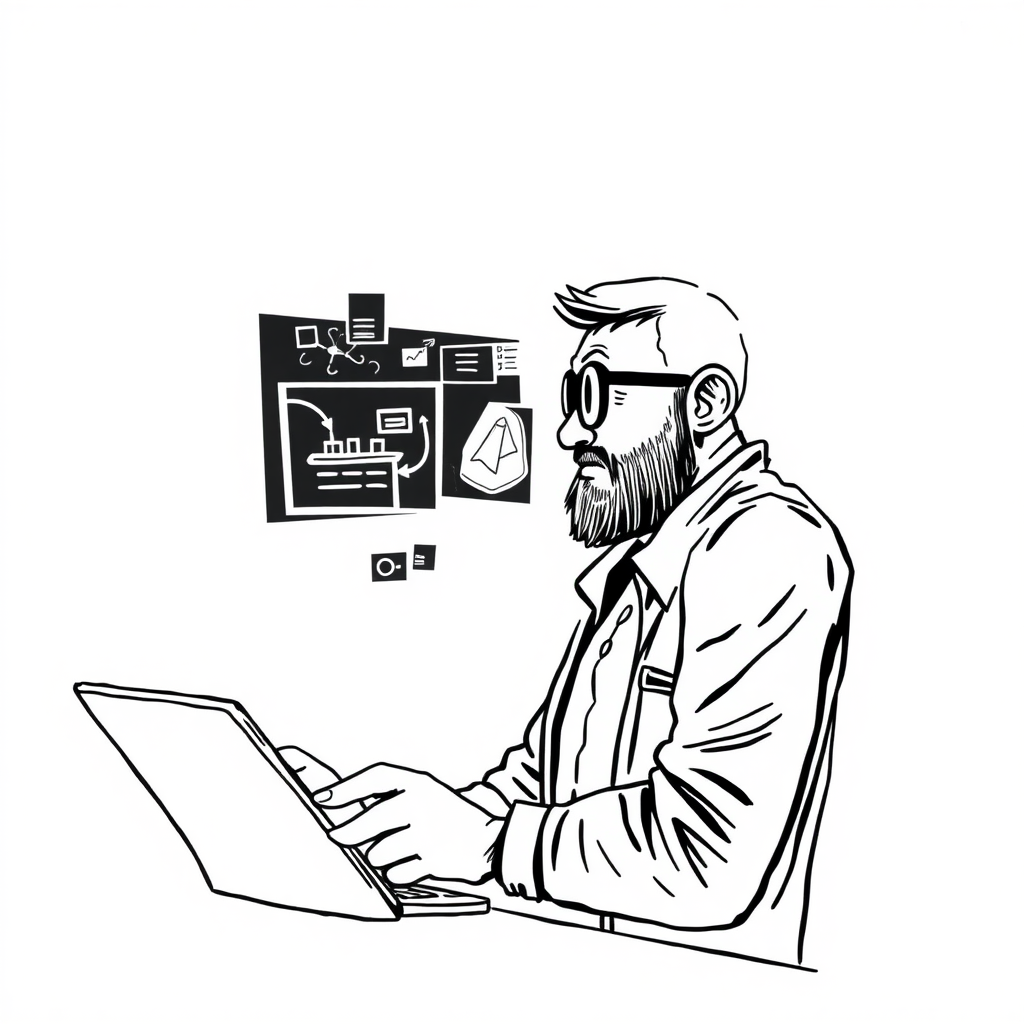In a Product Team, the role of a Product Manager (PM) is multifaceted and central to the success of a product. In this article, we will briefly explain the various duties for the Product Management role
Defining the Product Vision and Strategic Planning
Every creation begins with an idea, some call it a muse, so does every software product. It’s the Product Manager’s job to determine whether the idea is irrelevant or is worth pursuing. If it turns out to be the latter, a product vision is defined based on market research, user needs and business objectives.

Then a Product Roadmap is created to outline the product’s goals, features, and milestones. There are several workable strategies to do that, and the choice depends on the team and the situation. A popular approach is to have Objectives and Key Results (OKRs), in which the Objective is of qualitative nature and the results (usually 3) are of quantitative nature.
Market and User Research
It’s critical to research the competitive landscape, and even more important to research the target users with Usability Testing – it has to be done early and often. The first tests can be done with the live applications of the competitors, then you present your wireframes printed on paper with their wording, then you built throw-away prototypes (use Figma), then you iterate upon your prototypes and once you reach a High-Fidelity Prototype it’s time for…
Product Development Phase
At this stage, the team needs engineers since the Product Discovery phase is over. Usually, a lead engineer, an architect and 1 to 3 developers, and for small projects, even one software engineer is enough. Now, the Product Manager creates User Stories of the Personas for whom the product is meant, then passes them to the engineering team.
When done right, the High-Fidelity Prototype is the Minimum Viable Product (MVP) we give to the engineers to build. It serves two purposes at once – validating the product and being a live documentation for the engineers. This is a much more efficient and inexpensive way to build software compared to the engineering-first approach, it’s scientific product development, and the way it’s done is with lean teams.

During this phase, the Product Manager is communicating with all departments of the product team to ensure coordination. This means he is the link between the design, engineering, marketing, sales, customer support, and stakeholders. Should there arise a need for a new feature to be added, it’s written off for the next version instead, the key of Product Management is to prevent changing the requirements once the development is started or keep at least keep it to a minimum.
Product Lifecycle Management
It’s the Product Manager that ensures the Product Development is on track, and the product is adhering to the quality standards. It’s a good idea to still do Usability Testing even before the product is ready for launch.
When the product is close to launch, the Product Manager works closely with the Marketing and Sales team to ensure a successful go-to-market strategy. Product Management is about building great products, while Marketing is about telling the world about those great products.
Performance Monitoring
It’s crucial that the engineering team remains on the product team after the launch for the so-called Rapid Response Phase, during which most of the issues uncaught by the QA will surface once the early adopters start using the product. This is also the time, when the product gets the most value for the lowest investment possible from the product team.

After the launch, the Product Managers are monitoring the Key Performance Indicators (KPIs) to assess the product’s success and user satisfaction. Iterative improvements are made to the product. Most of the bugs should be caught and resolved during the Rapid Response Phase.
Feedback from users is important, but it shouldn’t be followed blindly. It’s the Product Manager’s job to do some Usability Testing and determine how relevant their feedback is. The rule of thumb is to keep changes to a minimum, and when changing something to target only one specific persona from the target users.
Stakeholder Management
As mentioned earlier, the Product Manager is communicating with the shareholders, including executives, customers, and partners, to ensure their needs and expectations are considered. The point of that is to manage their expectations, ensuring alignment with the product’s vision and goals. This is part of the reason many Product Managers come from Business schools, having such background helps with the Stakeholder management.
Problem-Solving

The Product Manager addresses any issues that arise during development or after launch, aiming to keep changes to a bare minimum, and that happens to be a good way to keep your engineers happy.
In conclusion, a Product Manager plays a crucial role in guiding a product from concept to market, ensuring the product is delivering value to the users and is in alignment with the business’s strategic goals.

Leave a Reply